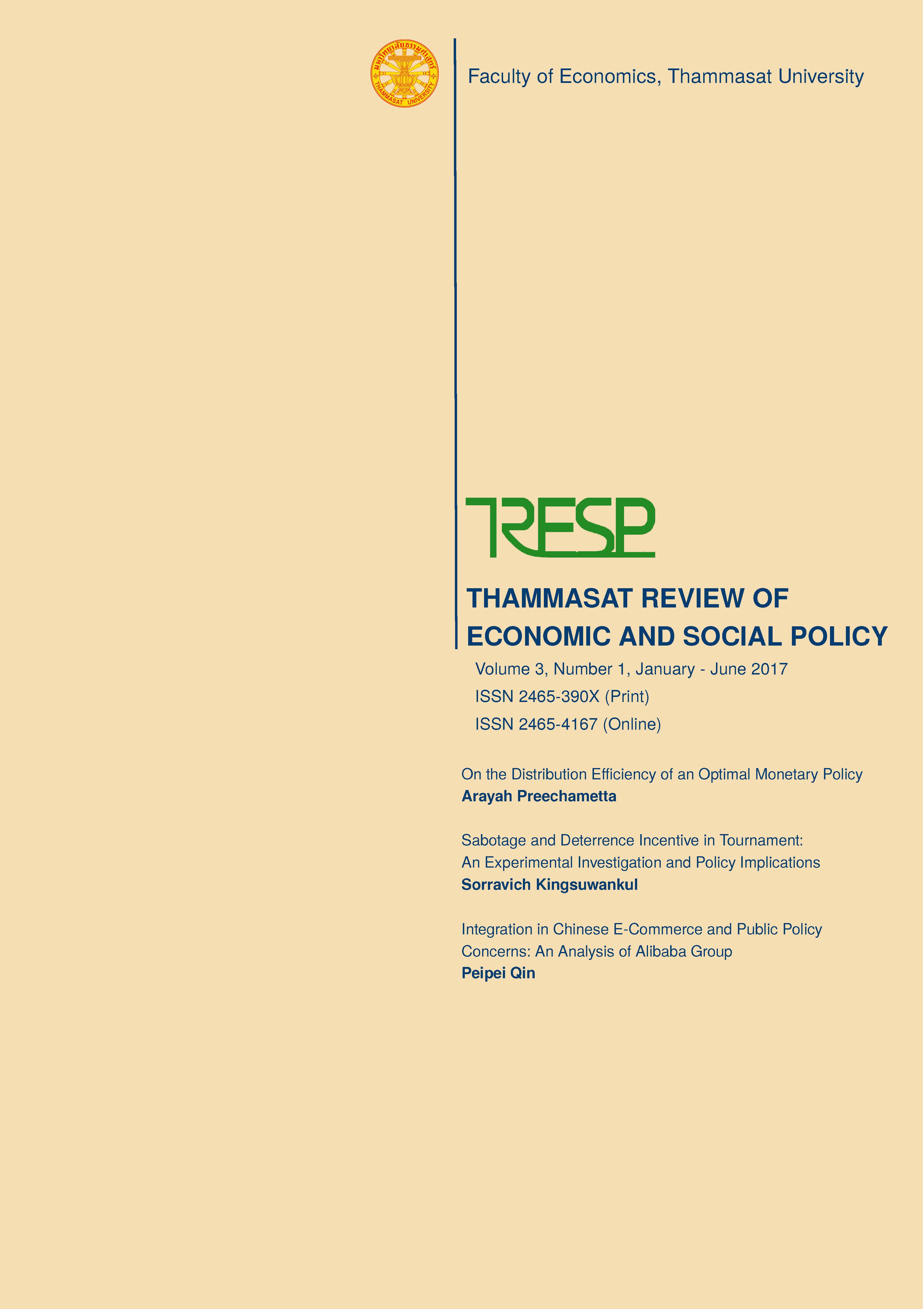Integration in Chinese E-Commerce and Public Policy Concerns: An Analysis of Alibaba Group
DOI:
https://doi.org/10.14456/tresp.2017.3Keywords:
Adaptation, Innovation, Technological Change and Government PolicyAbstract
Established in 1999, Alibaba’s market value reached 231 billion USD in 2004. Taobao.com, including Tmall.com, is Alibaba’s consumer-to-consumer portal. In March 2013, the combined gross merchandise volume (GMV) of Taobao and Tmall exceeded 1 trillion CNY. Alibaba Group has developed its own third party payment – Alipay, based on big data analysis – to ensure a safe and clear payment environment for the privacy concerning customers. The logistics industry bonds with online sales tightly. A number of logistics companies seize the opportunity and gain benefits from the booming sales volume. This paper aims to explore the integration of e-commerce, third party payment, and the logistics industry. However, besides the prodigious development of those industries, they have their own limitations. This paper analyzes the limitation of Taobao.com, Alipay, and the logistics industry as well as the dilemma they are facing. Important public policy concerns are discussed accordingly.
References
Aghion, P., Harris, C., Howitt, P., & Vickers, J. (2001). Competition, imitation and growth with step-by-step innovation. The Review of Economic Studies, 68(3), 467- 492.
Chen, J., Tao, Y., Wang, H., & Chen, T. (2015). Big data based fraud risk management at Alibaba. The Journal of Finance and Data Science, 1(1), 1-10.
Chen, Y., Seong, J., & Woetzel, J. (2015). China’s rising Internet wave: Wired companies. McKinsey Quarterly, 1-9.
Li, J., Zhang, W., Wu, D. S., & Zhang, W. (2014). Impacts of big data in the Chinese financial industry. The Bridge, 44(4), 20-26.
Li, Q., & Liu, Z. (2007, September). Research on chinese C2C e-business institutional trust mechanism: case study on taobao and ebay (cn). In Wireless Communications, Networking and Mobile Computing, 2007. WiCom 2007. International Conference on (pp. 3787-3790). IEEE.
Lin, Z., & Li, J. (2005, August). The online auction market in China: a comparative study between Taobao and eBay. In Proceedings of the 7th international conference on Electronic commerce (pp. 123-129). ACM.
Lu, Y., Yang, S., Chau, P. Y., & Cao, Y. (2011). Dynamics between the trust transfer process and intention to use mobile payment services: A cross-environment perspective. Information & Management, 48(8), 393- 403.
Ramanathan, R. (2010). The moderating roles of risk and efficiency on the relationship between logistics performance and customer loyalty in ecommerce. Transportation Research Part E: Logistics and Transportation Review, 46(6), 950-962.
Stucke, M. E. (2013). Is competition always good?. Journal of antitrust Enforcement, 1(1), 162-197.
Yang, R., & Lang, C. (2014, June). On Effects of Cloud Computing on Big Data Processing for E-commerce Development. In 3rd International Conference on Science and Social Research (ICSSR 2014). Atlantis Press.
Ying, W., & Dayong, S. (2005). Multi-agent framework for third party logistics in E-commerce. Expert Systems with Applications, 29(2), 431-436.



